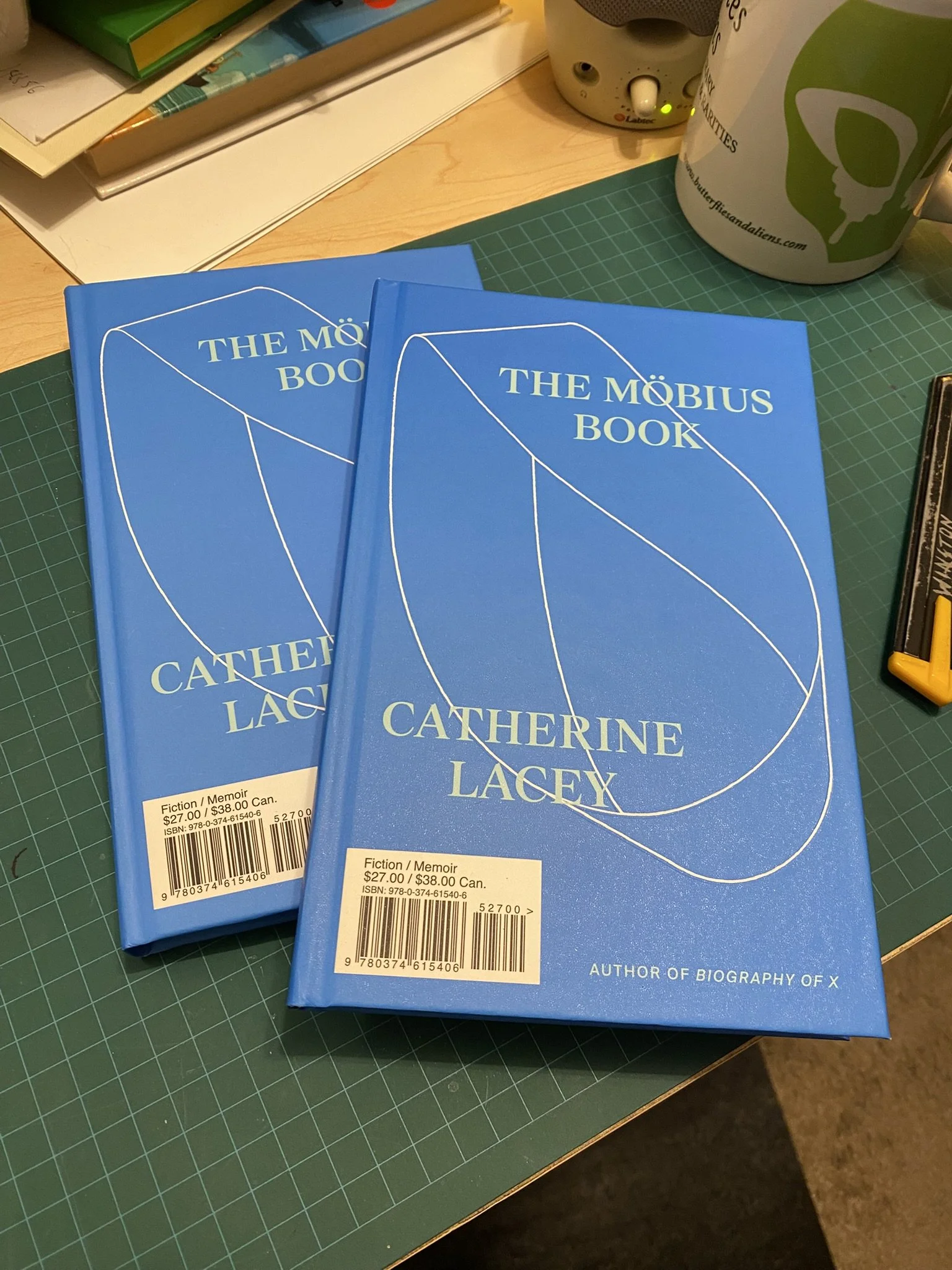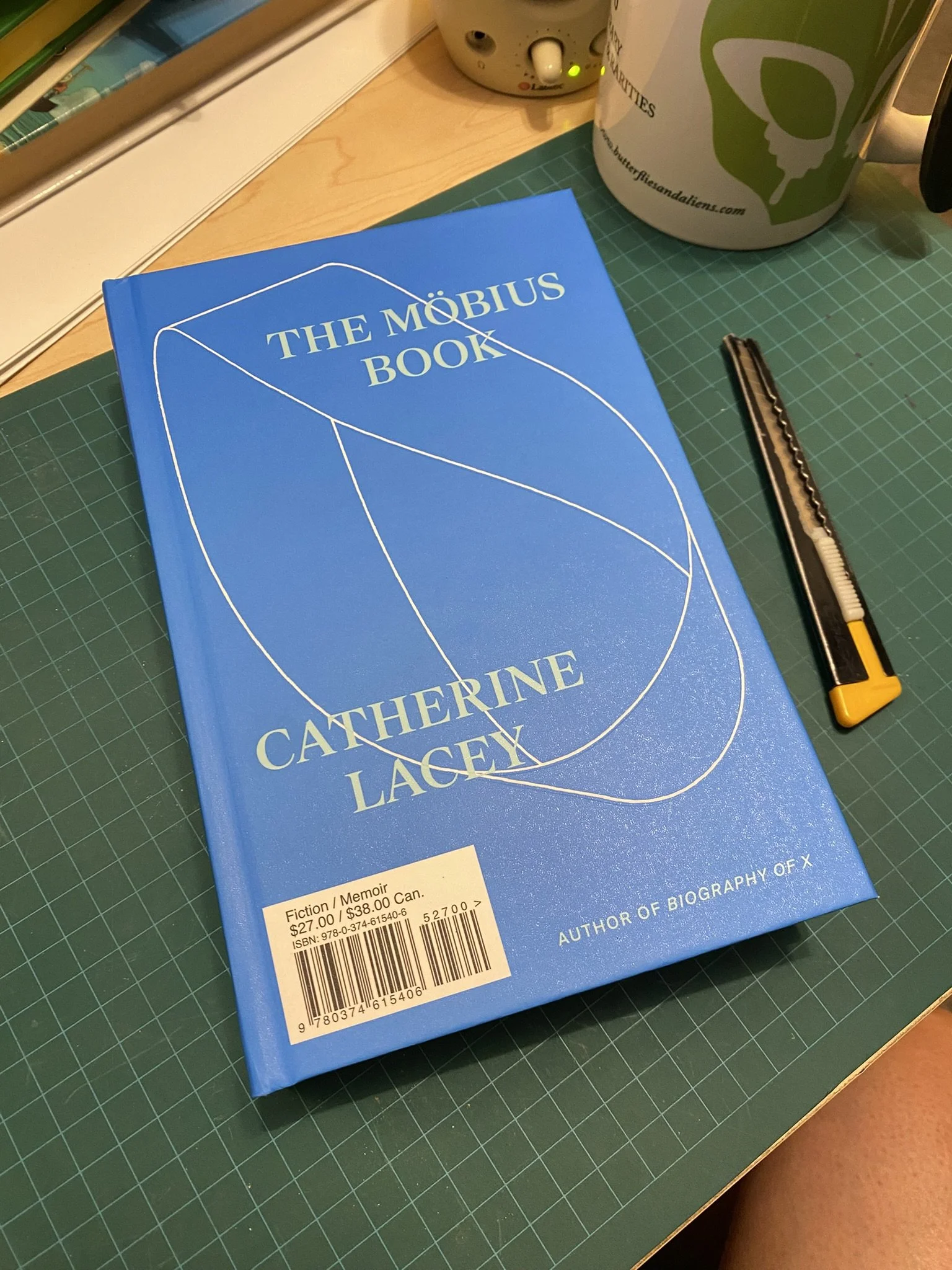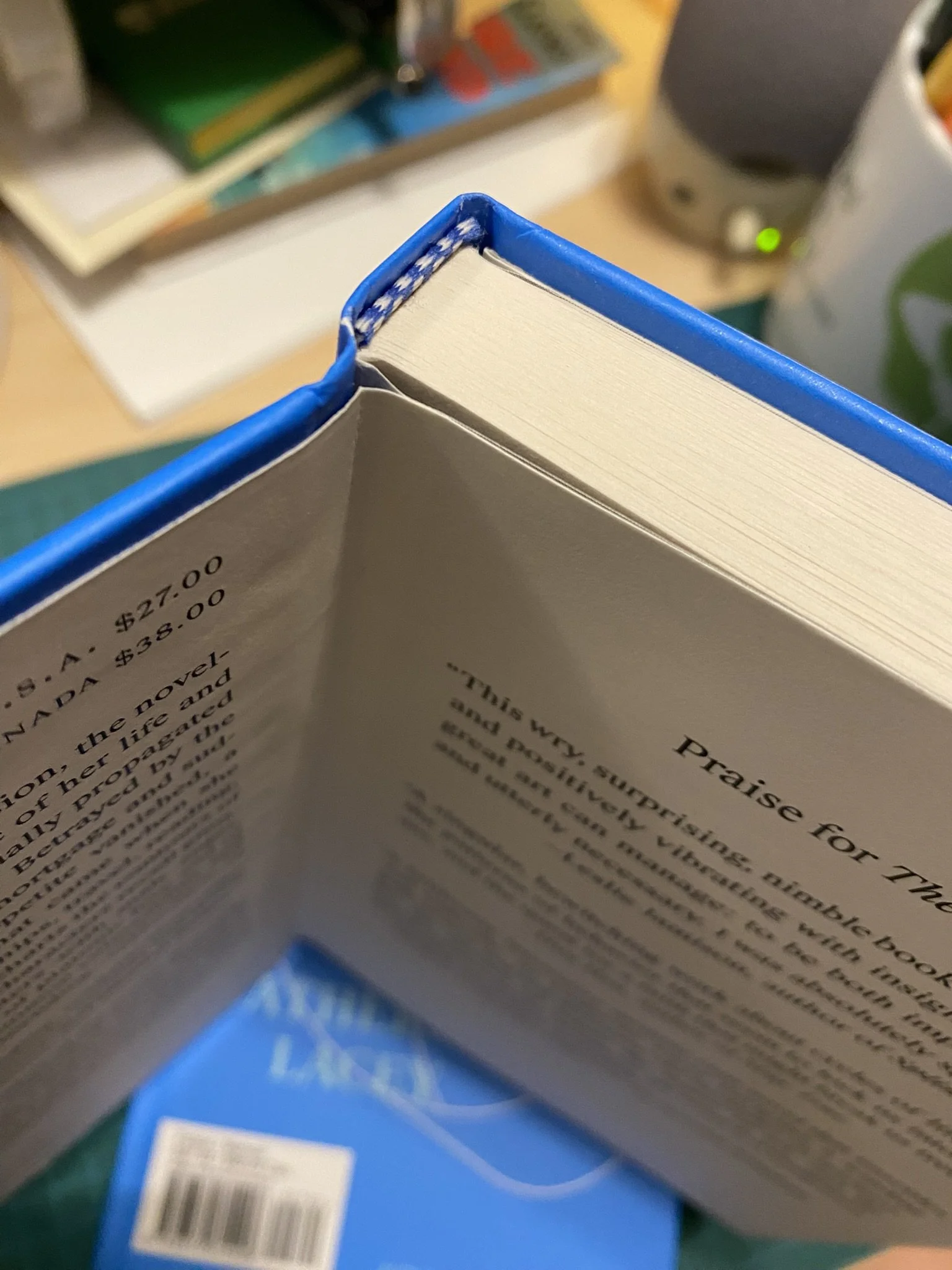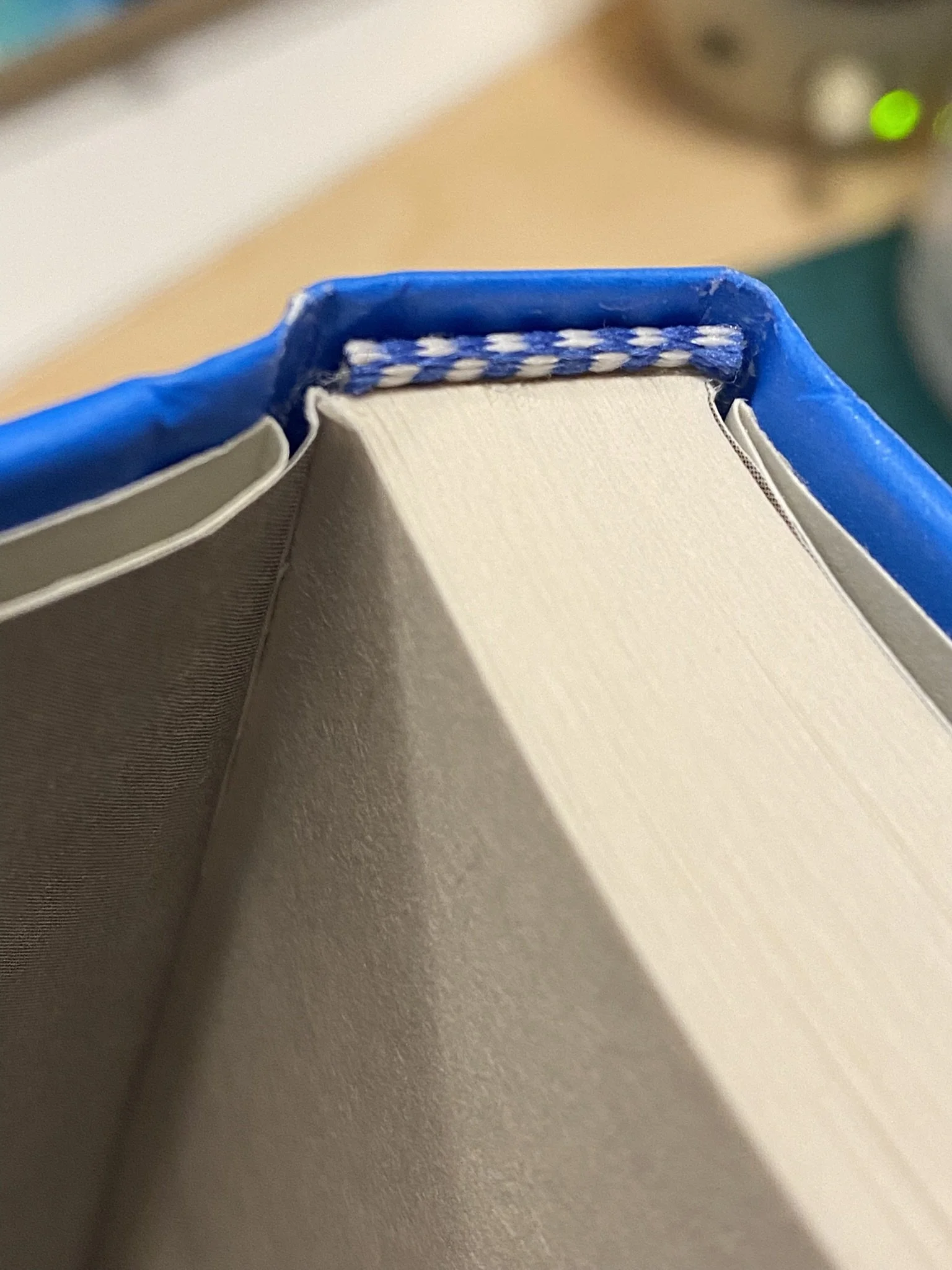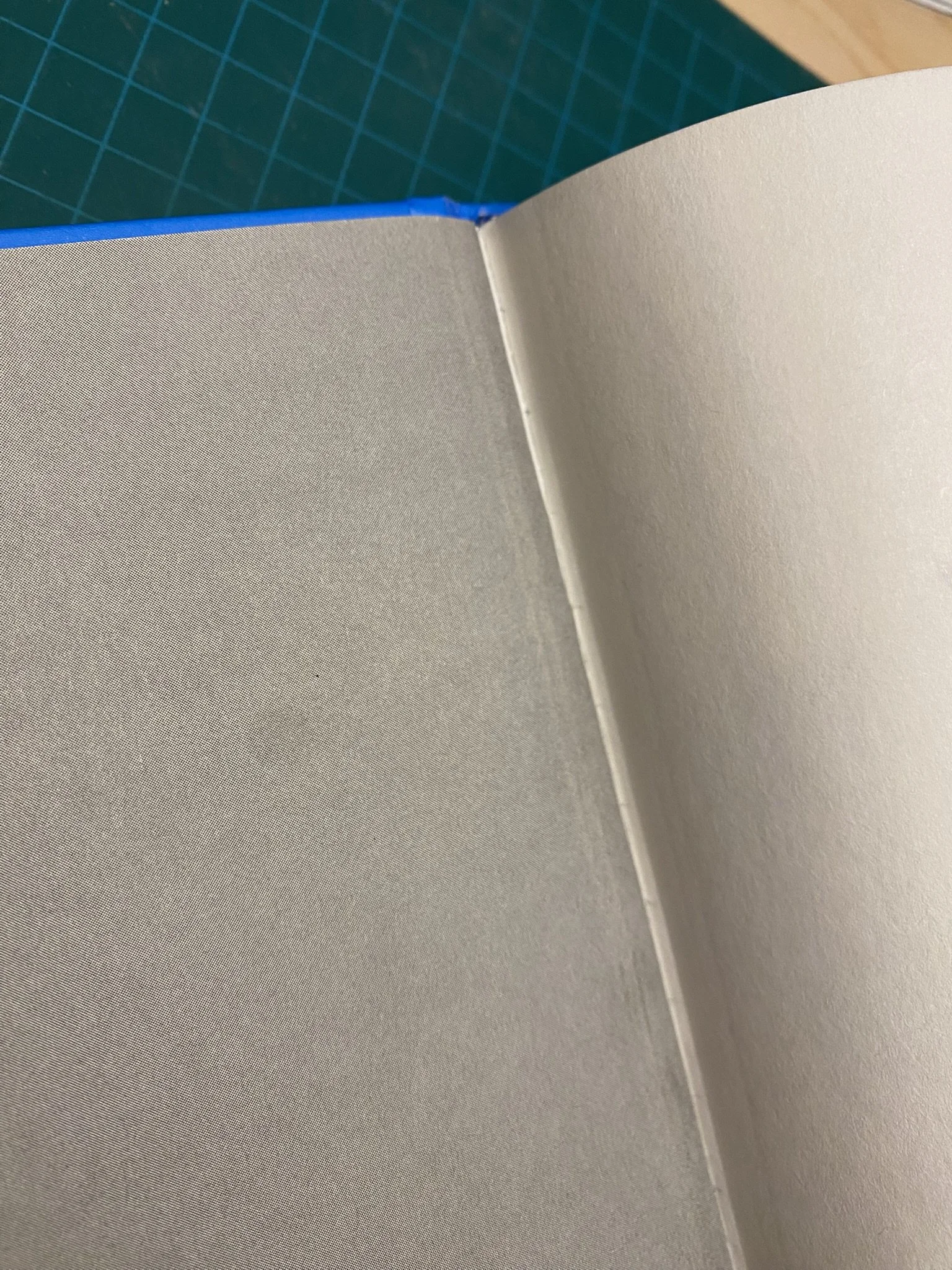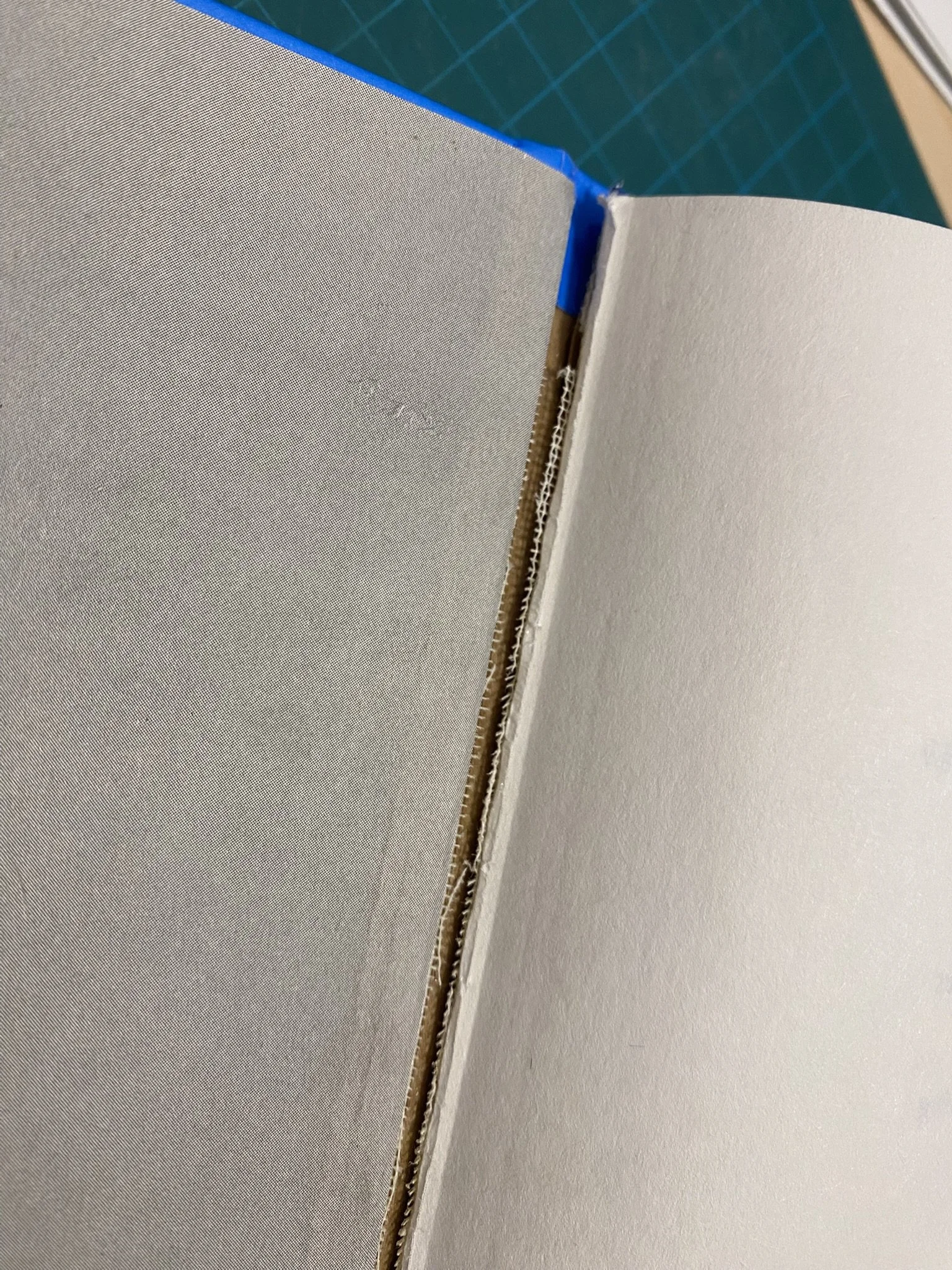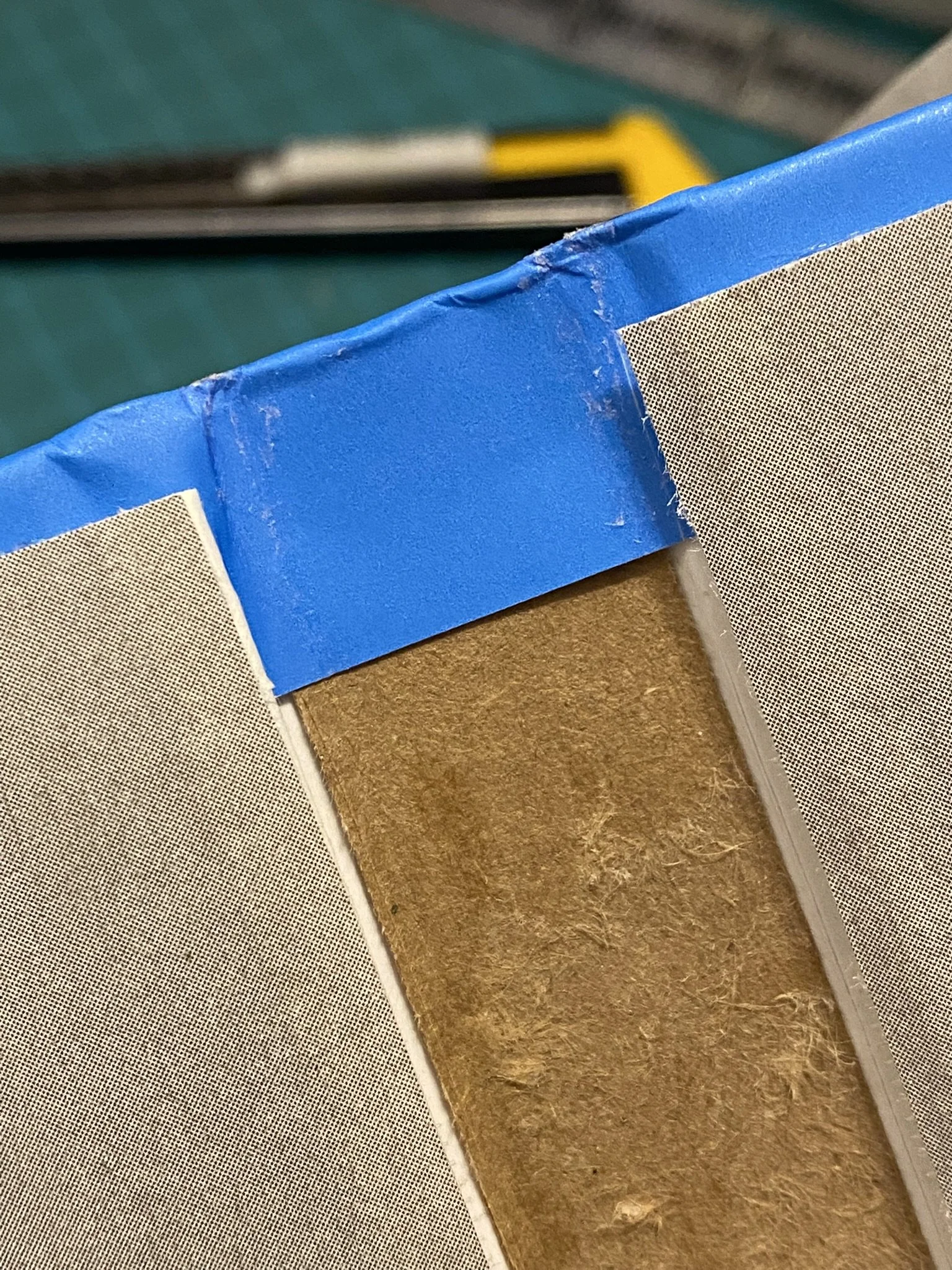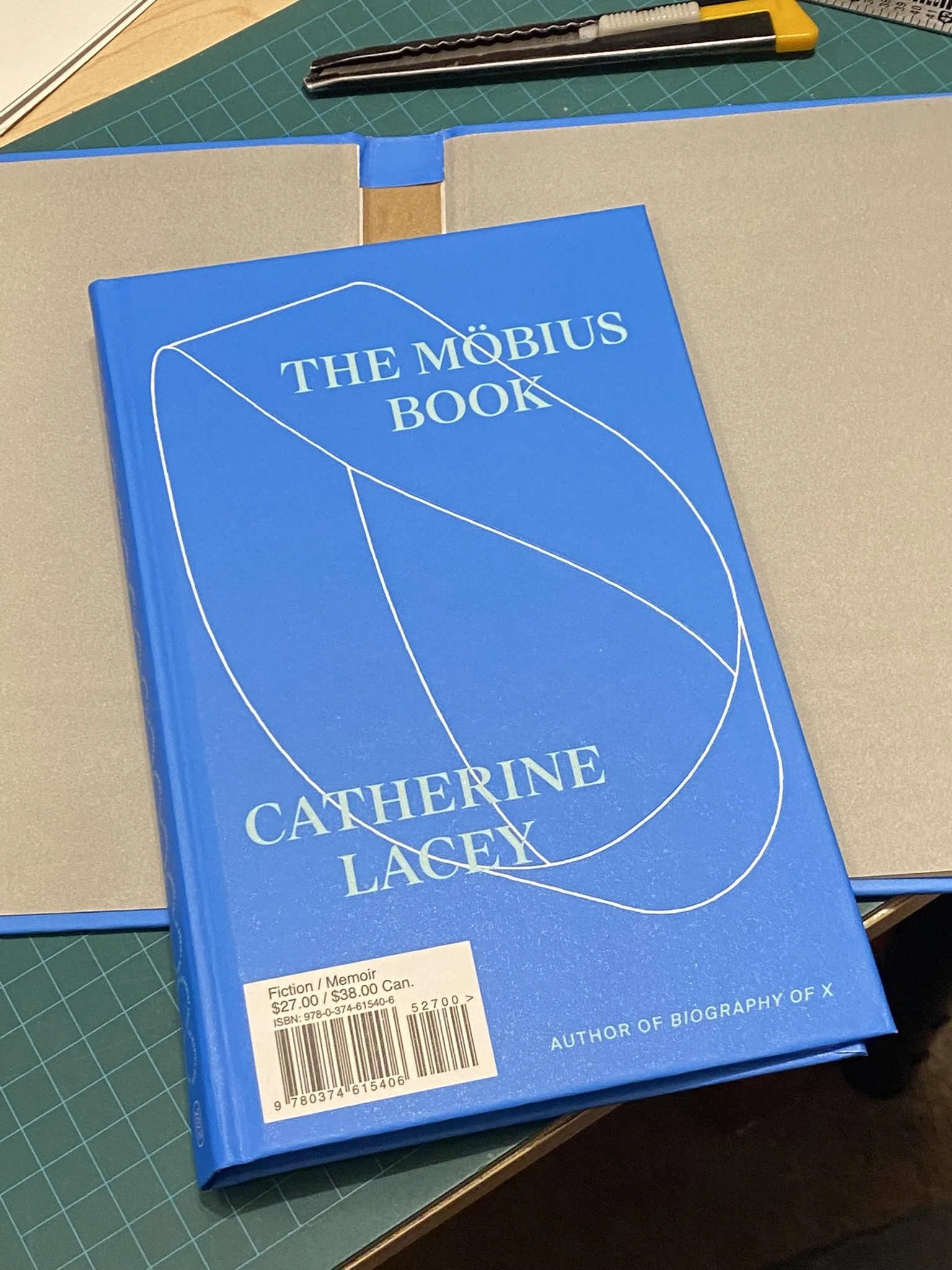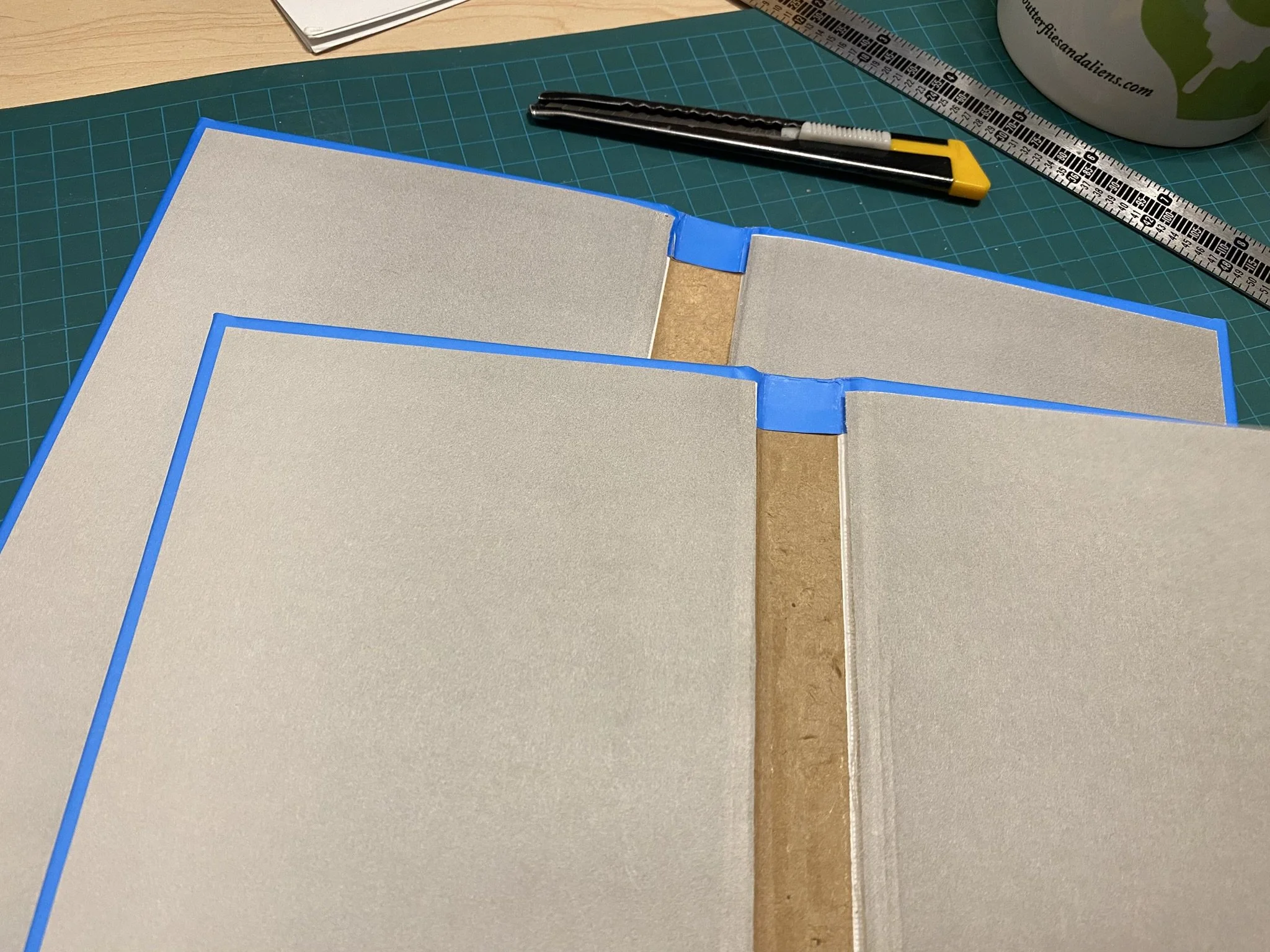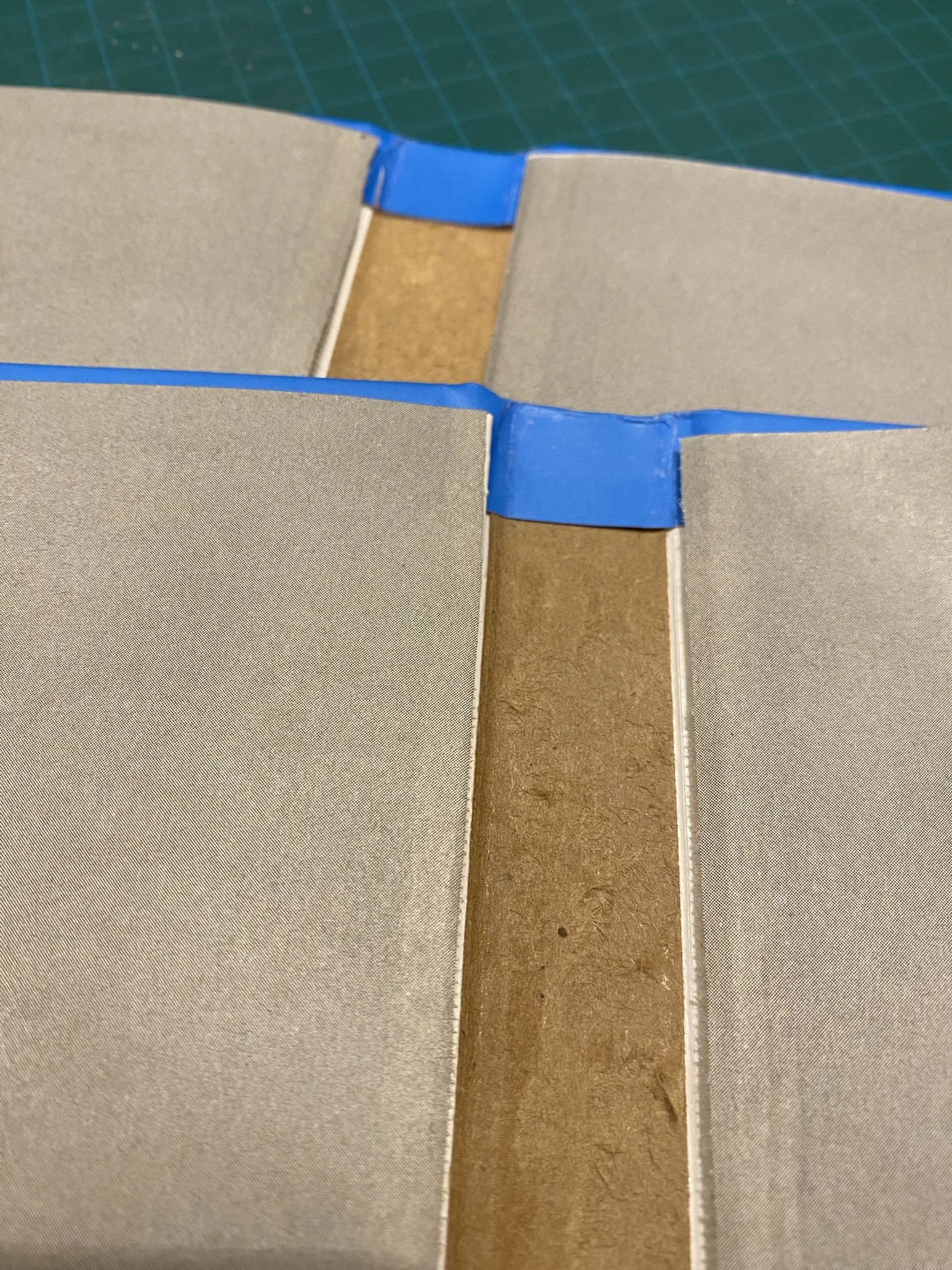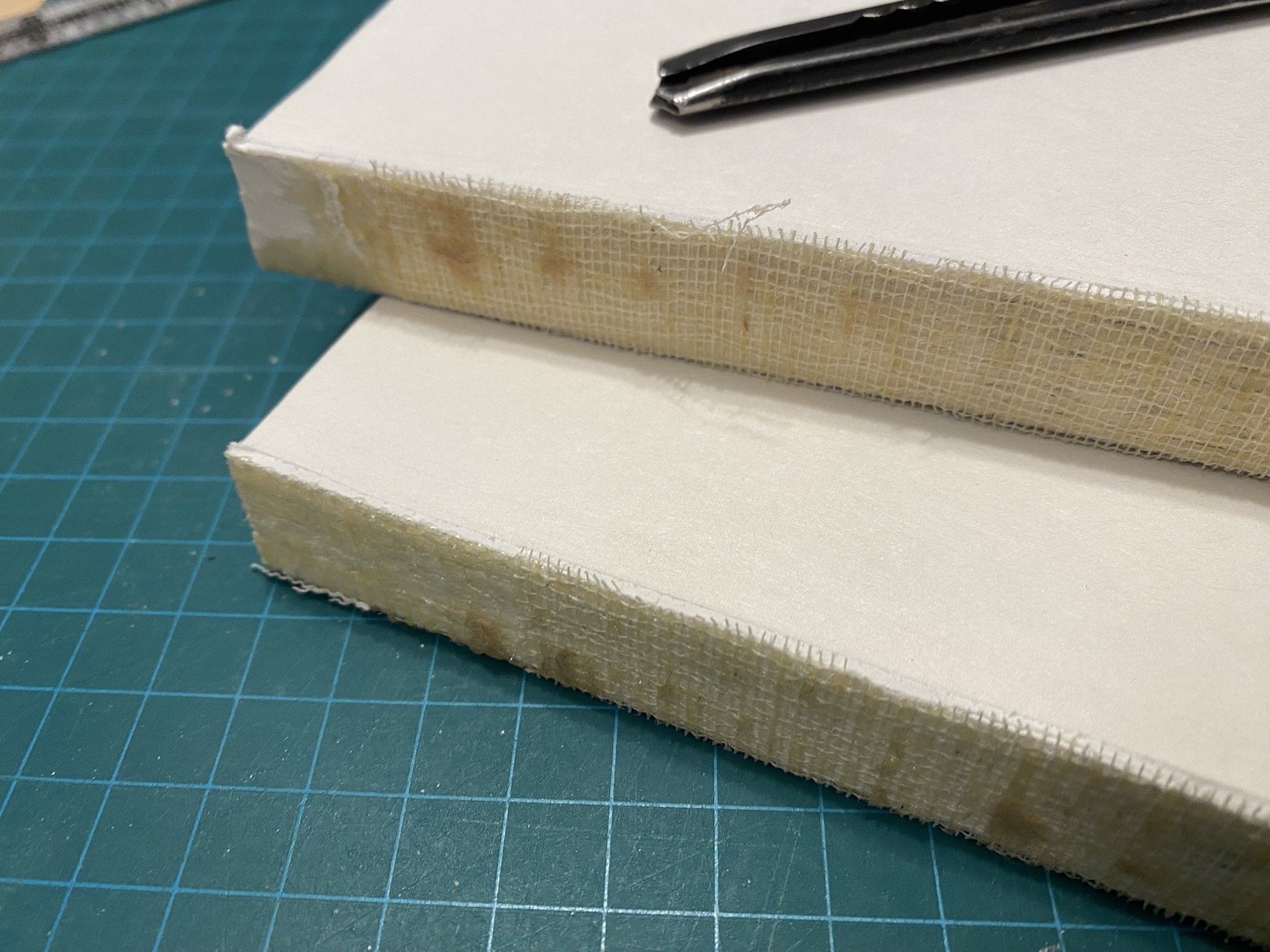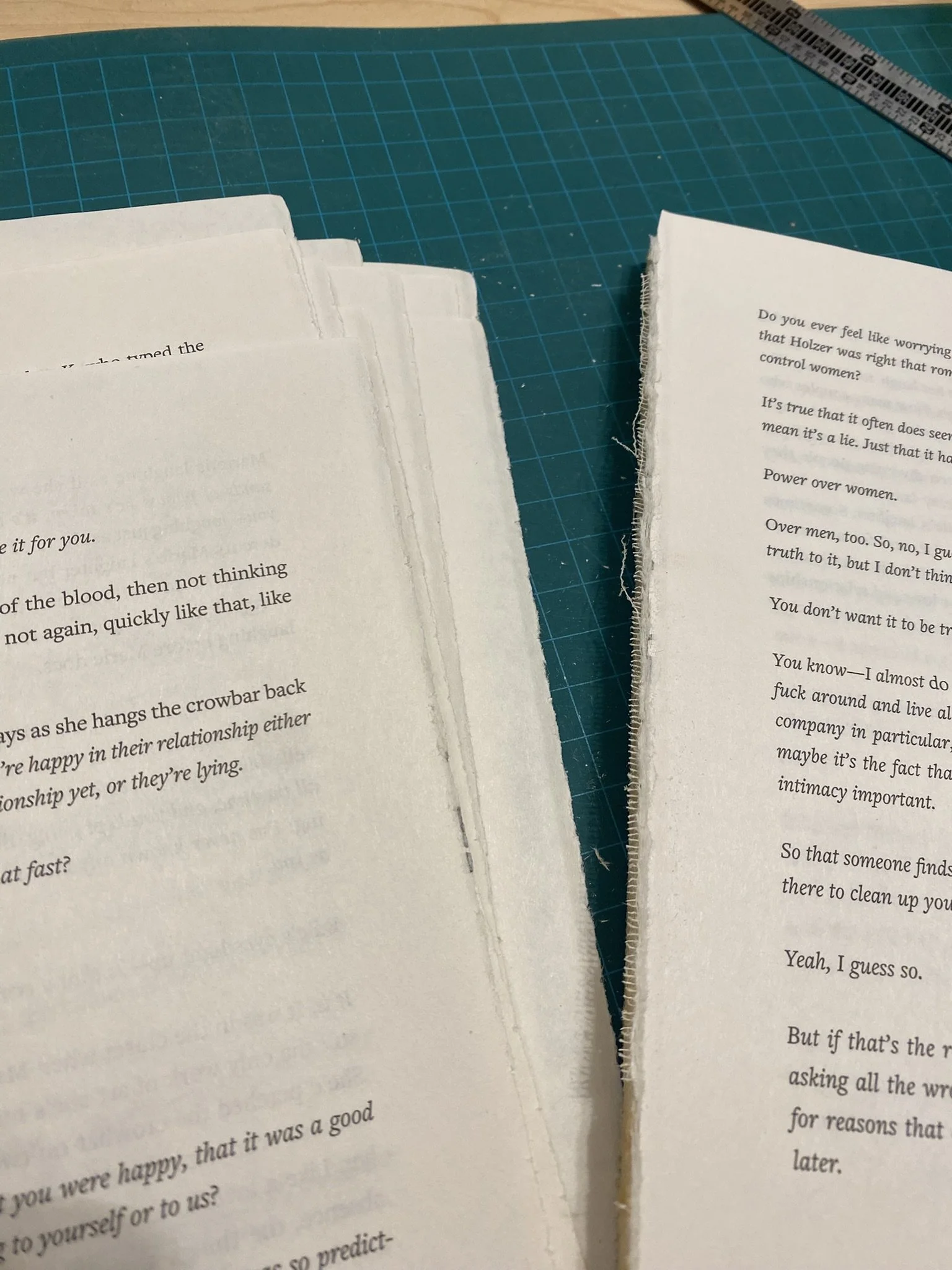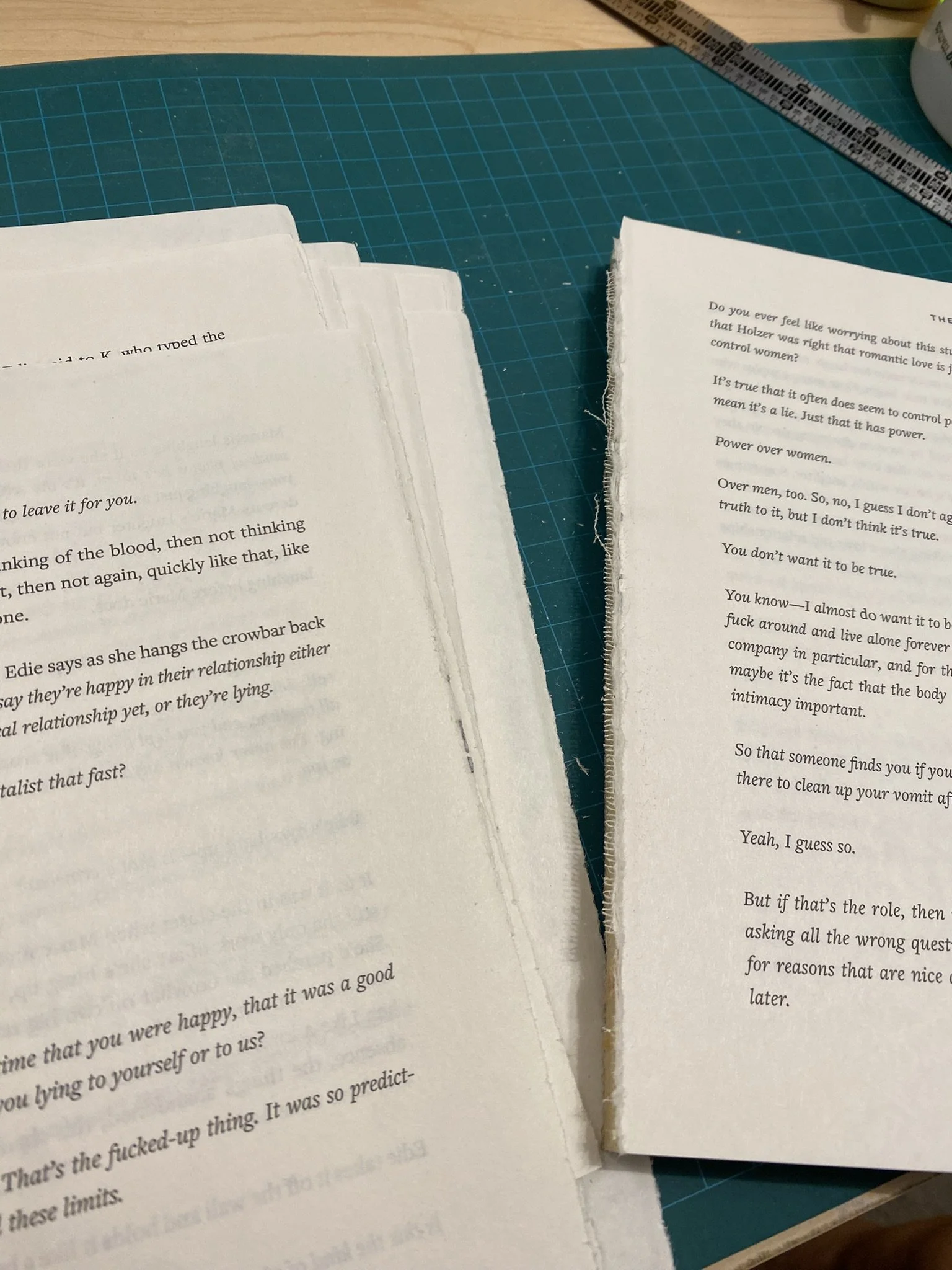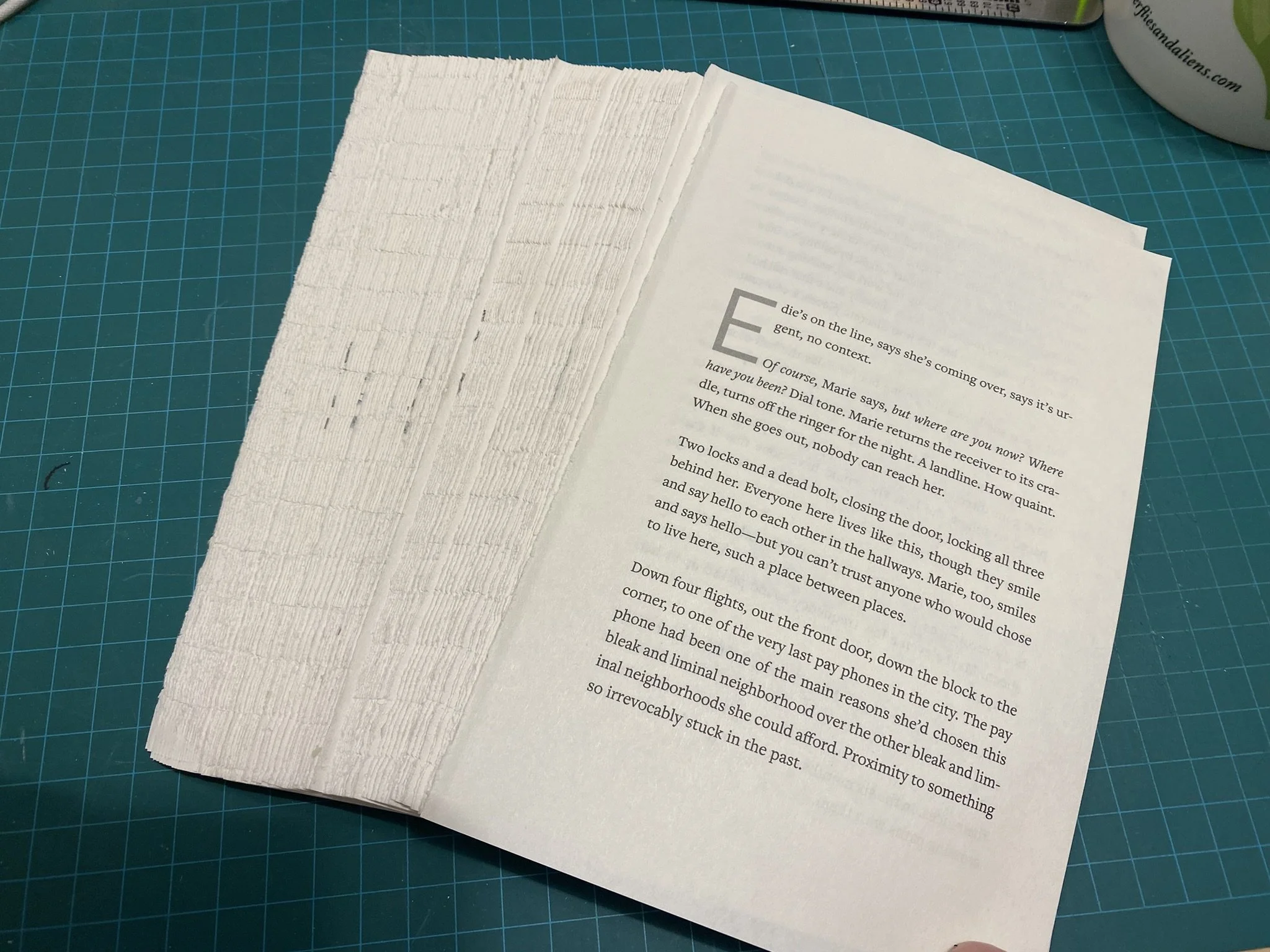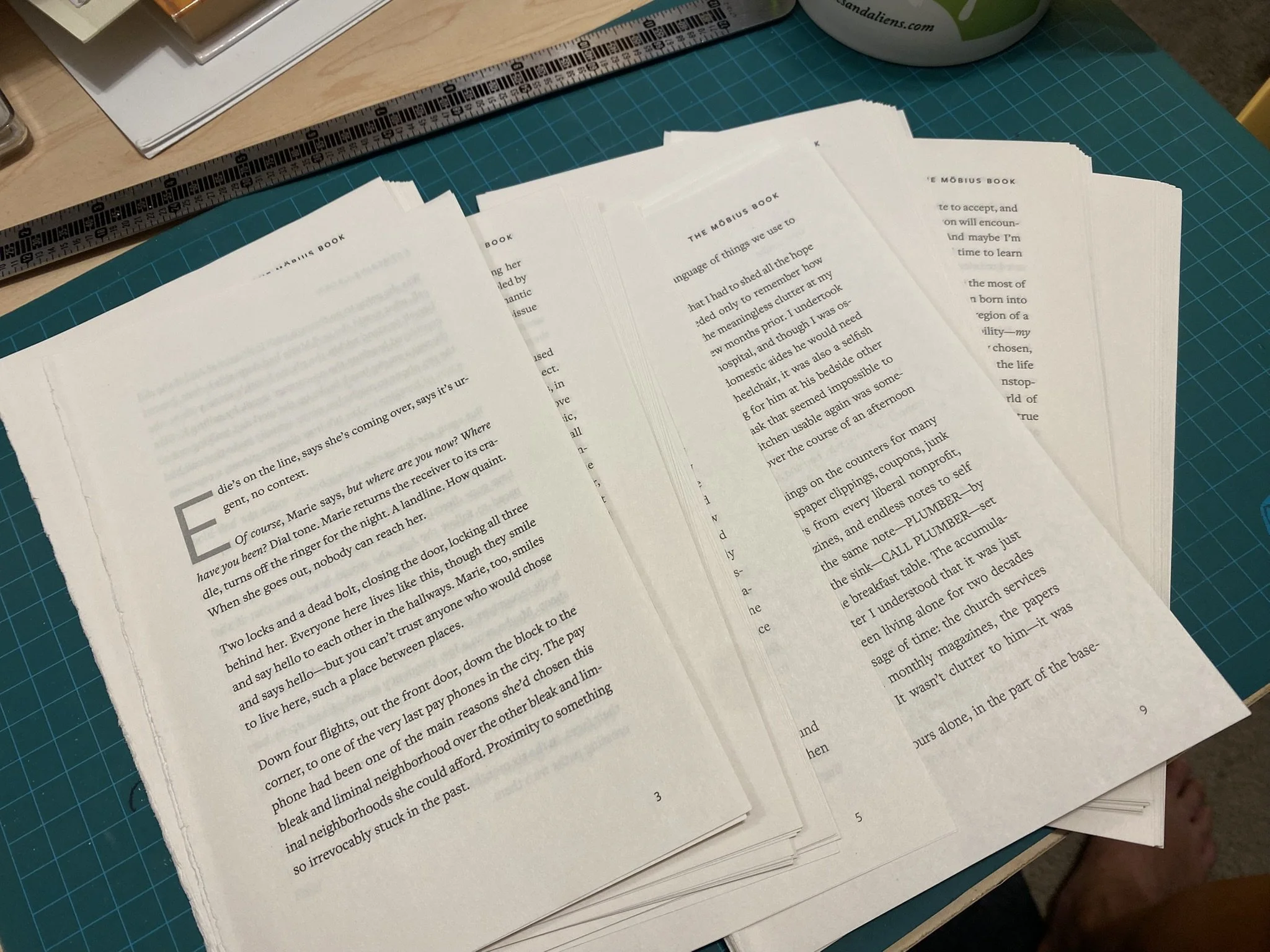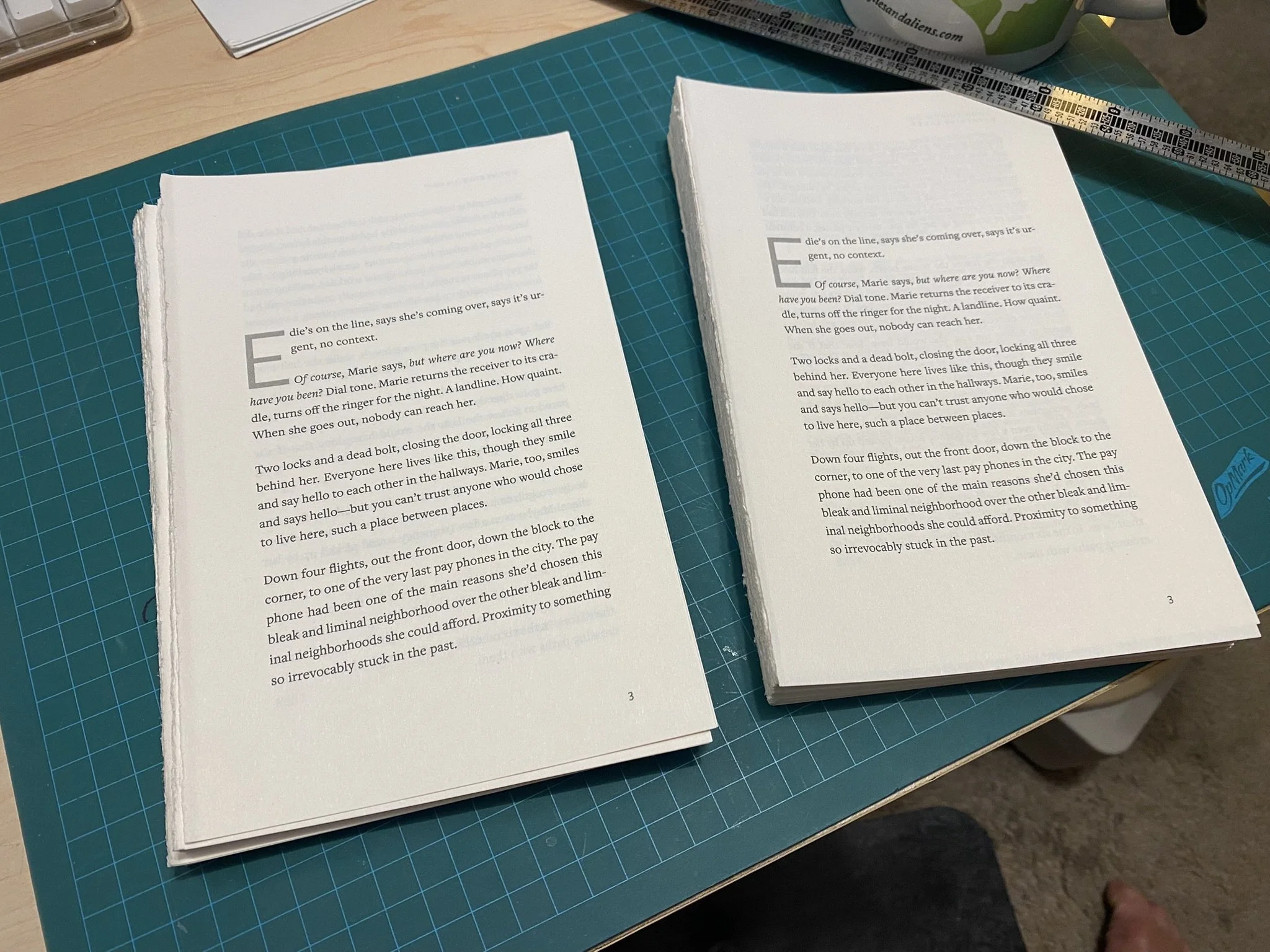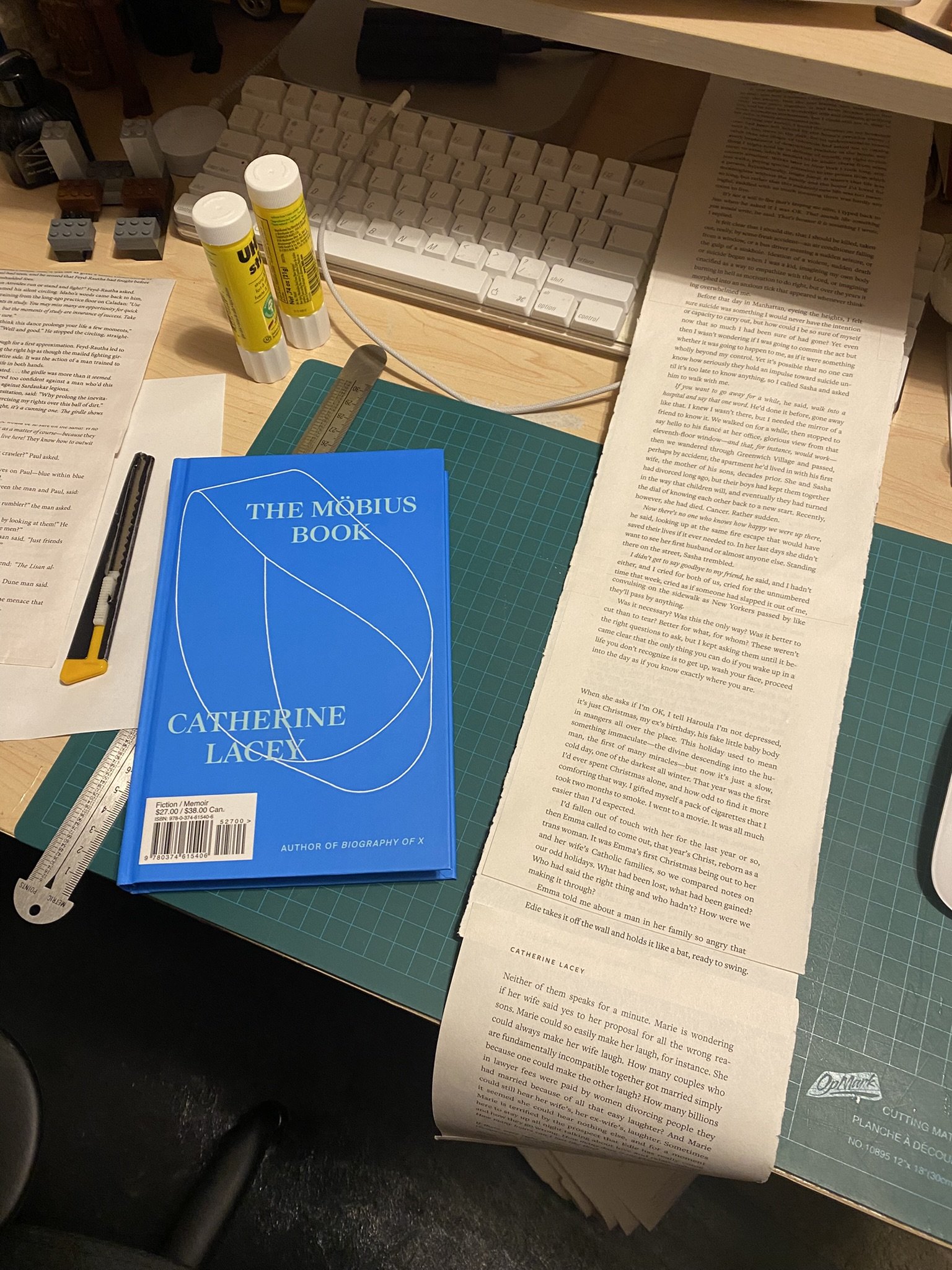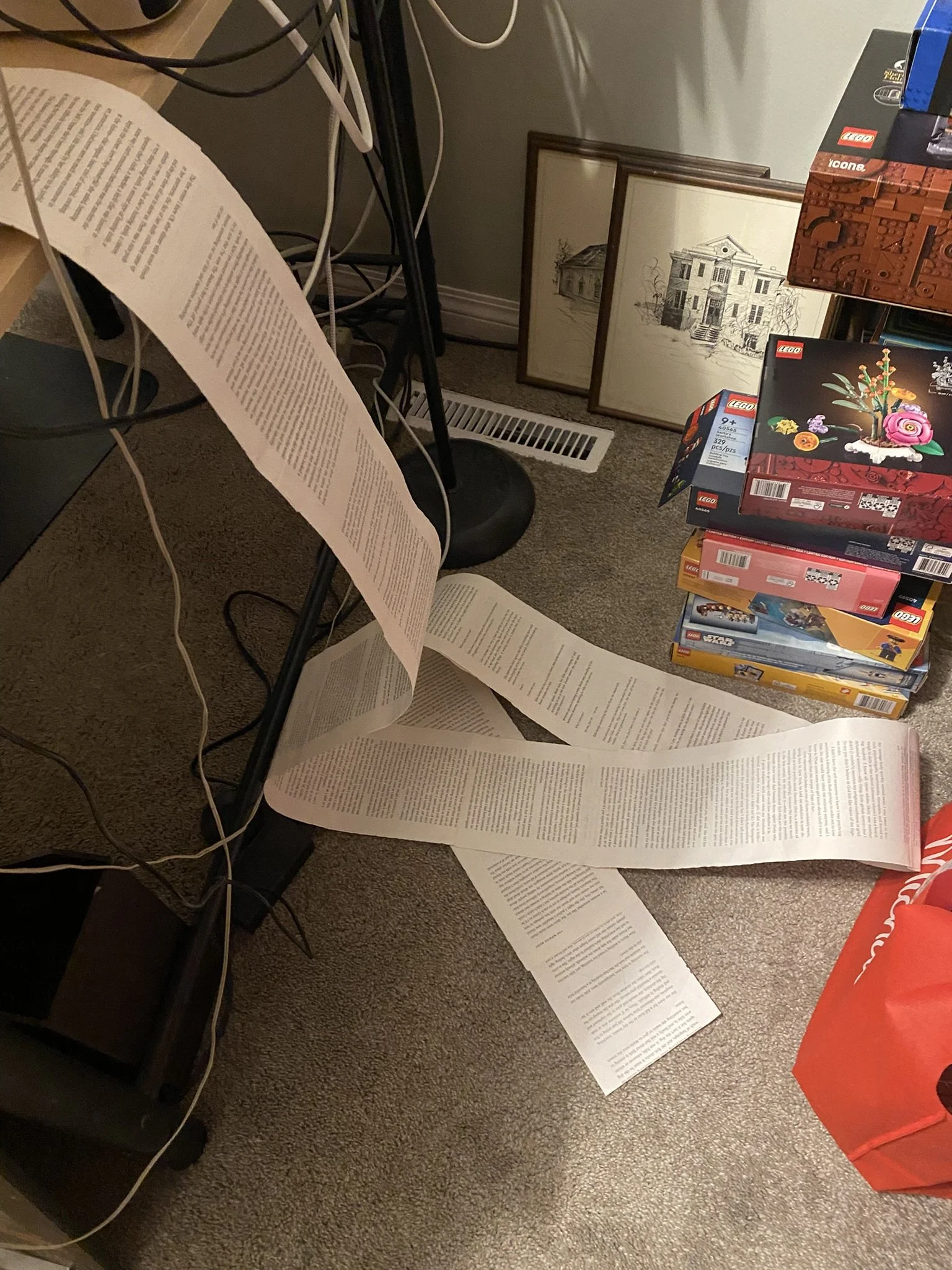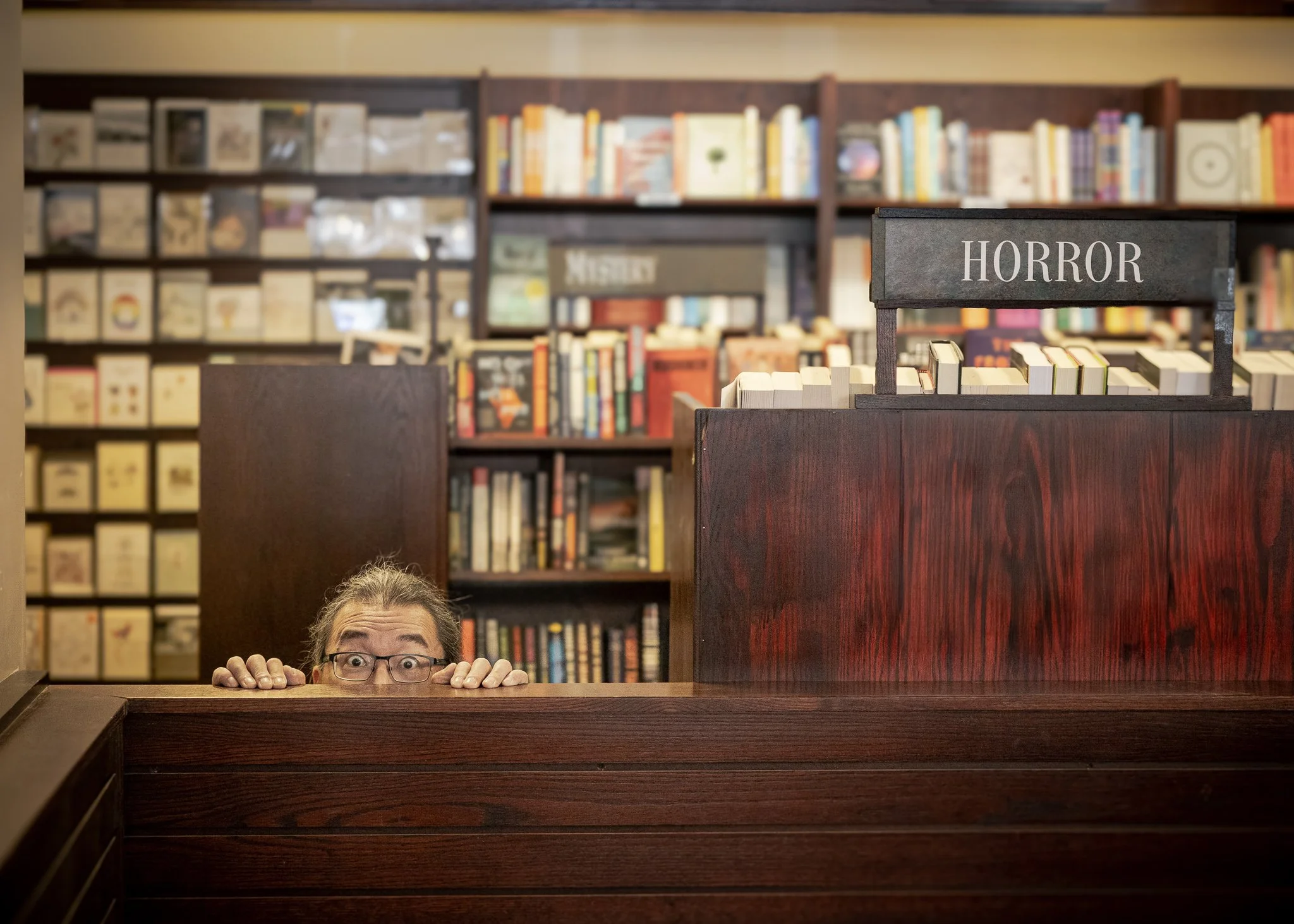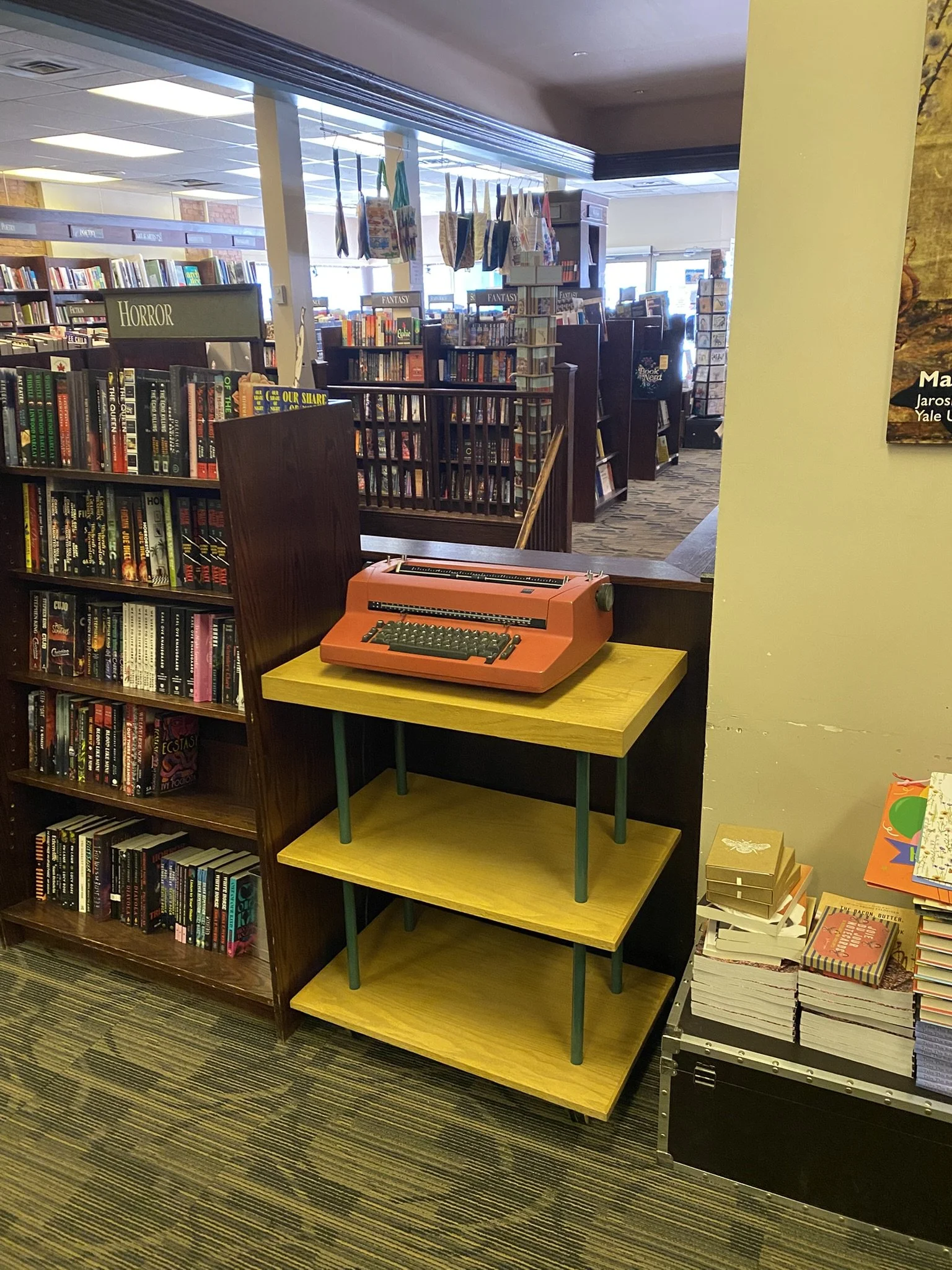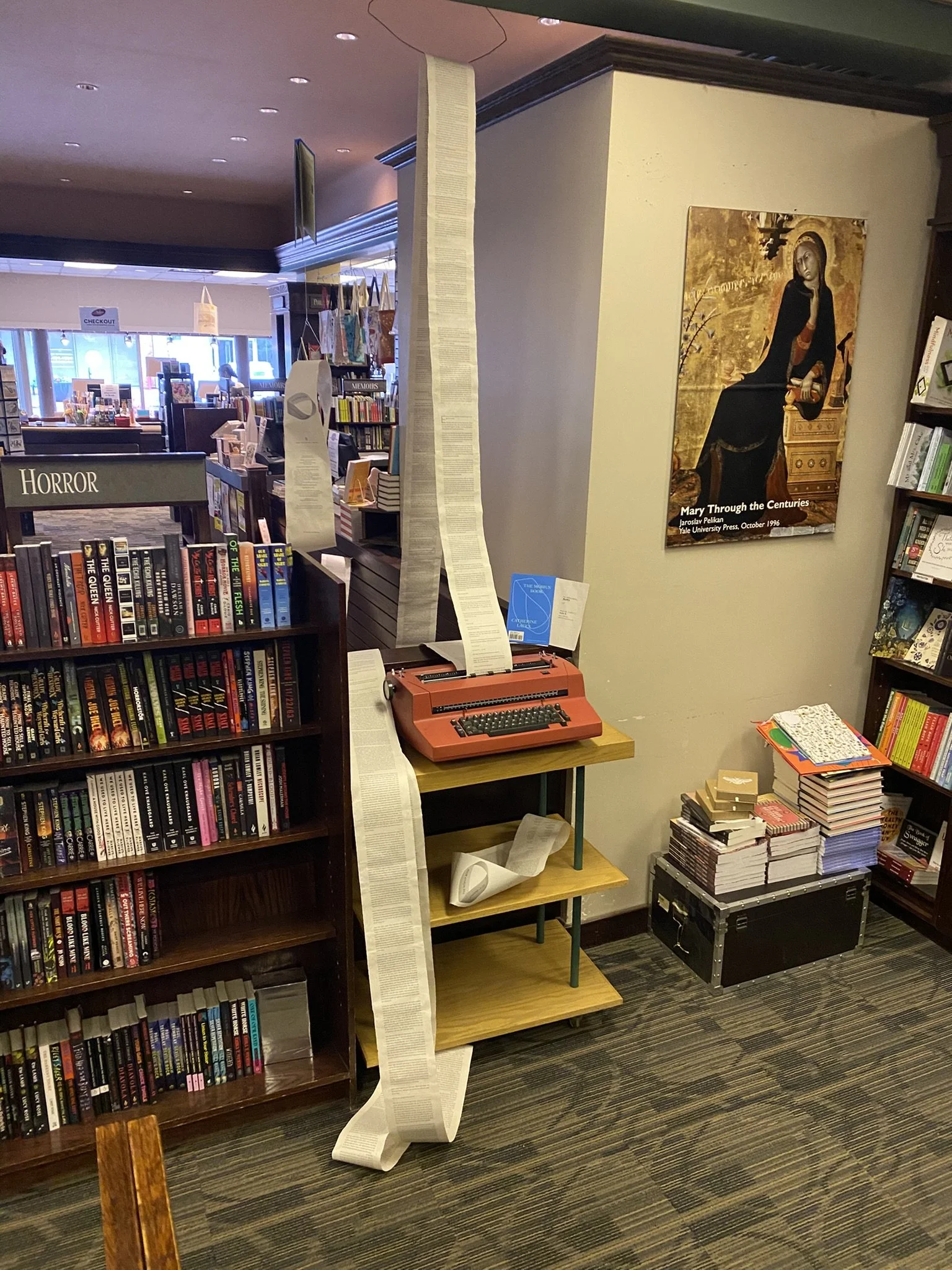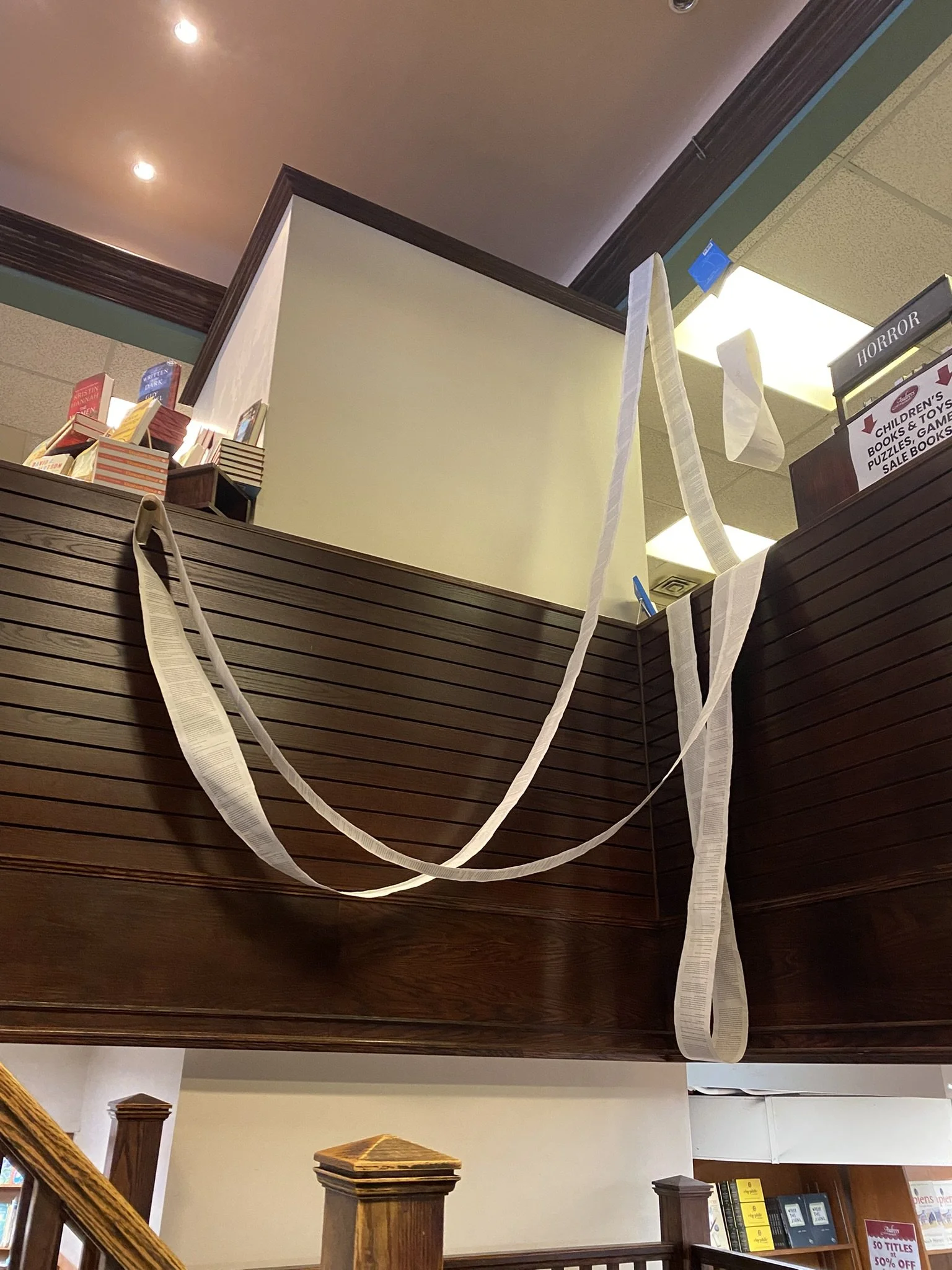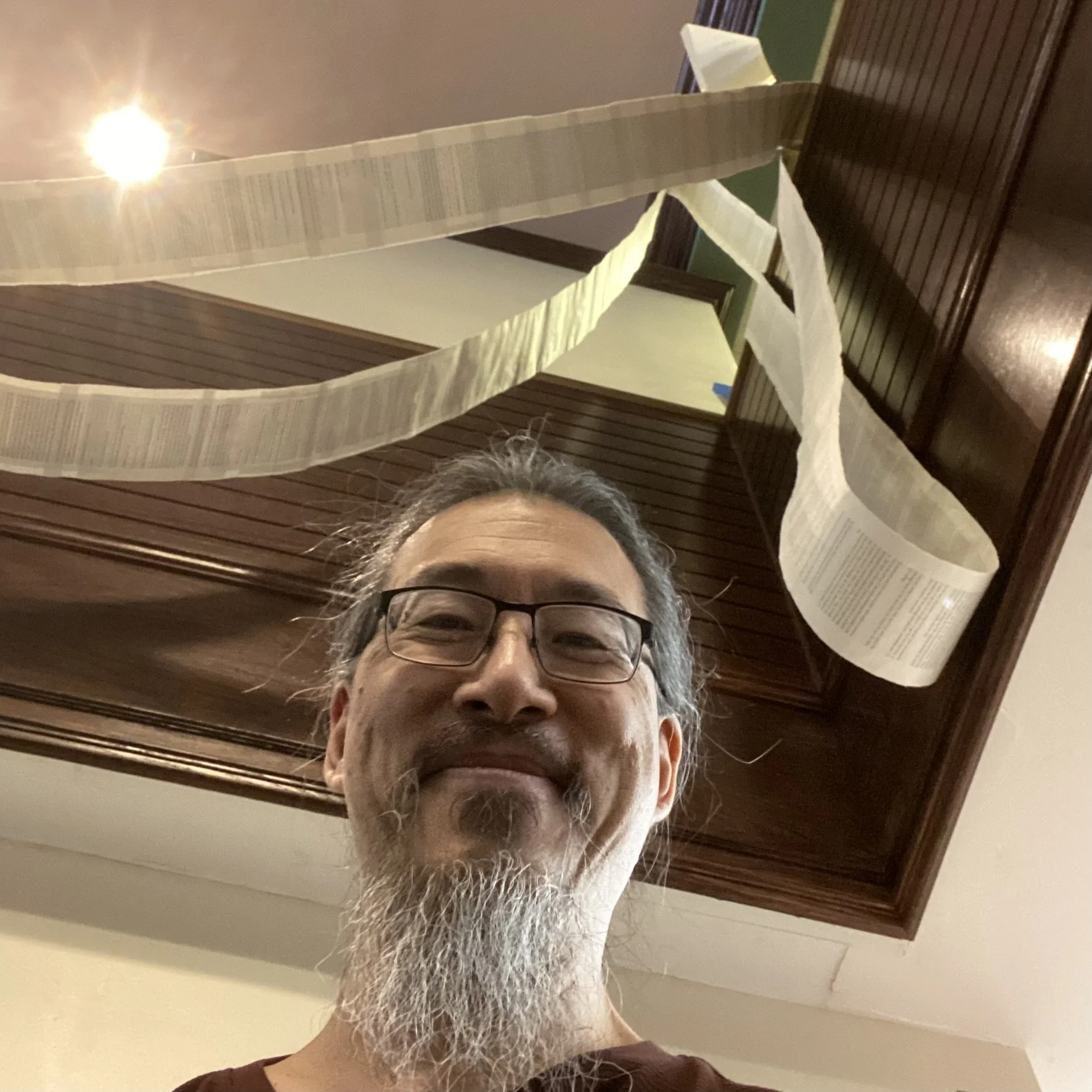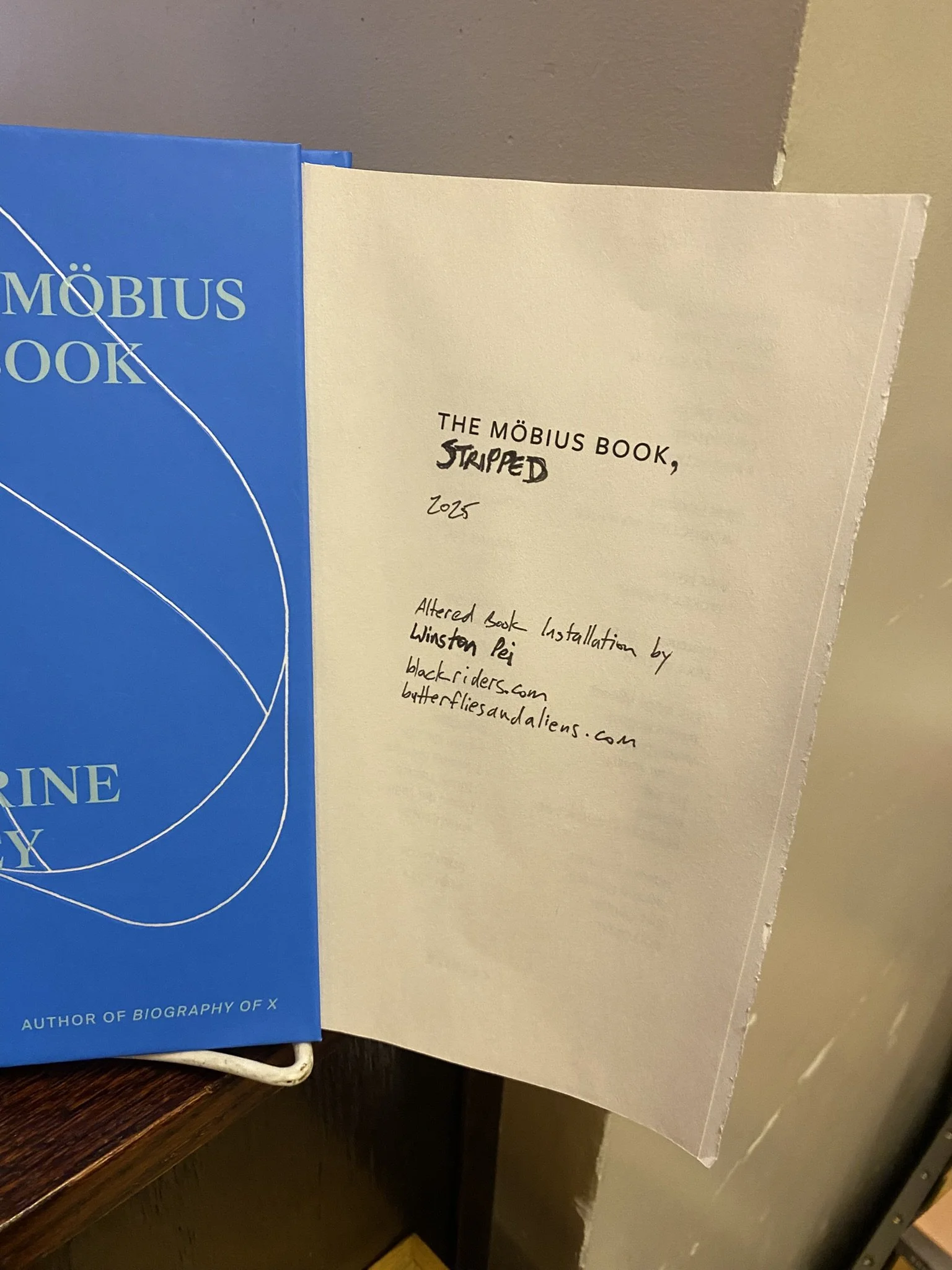The Möbius Book, Stripped
My latest altered book project came together rather suddenly – inspiration sometimes does strike like lighting, especially when helped along by encouragement from the people around you. But funnily enough, it started from seeing an audiobook…
Ever since I was a child, I’ve been fascinated by möbius strips, in their simplest form a one-sided three-dimensional object formed by attaching the ends of a strip of paper together with a half-twist. If you’ve never played with one, they’re easy to make and, as a first experiment, see what happens when you try to cut one in half lengthwise. With that curiosity lurking just below the surface, while scrolling through the new and upcoming releases for June on Libro.fm (and sidenote, if you like to purchase your audiobooks, Libro.fm is the best place to get them!), when I saw the word “möbius” pop up I obviously had to take a closer look.
Turns out it was for a book titled The Möbius Book – “möbius” and “book”? Doubly intriguing! Written by Catherine Lacey and published June 17, 2025, by Farrar, Strauss and Giroux, The Möbius Book is described in the blurb in Libro.fm as a “hybrid work across fiction and nonfiction with no beginning or ending” and includes the following note to the listener: “This book was written in two parts, either of which can be listened to first, neither of which is the true start of the story. You have the option to skip ahead to the fiction half or start at the beginning with the nonfiction.”
Interesting, but as an audiobook the concept didn’t quite land for me…
…
Fast forward a couple of weeks, working a shift at Audreys Books, I reach up to a shelf to adjust a book that looked to have been shelved backwards because the barcode was showing.
Only it wasn’t backwards.
It was The Möbius Book, but in print form…
…and the cover was identical on both sides!
Turns out that for the print edition the publisher had opted to produce it as a tête-bêche binding, with the fiction and nonfiction halves of the book bound head-to-toe or upside down relative to one another. Shout out here to the case designer, Alex Merto, as well as the interior design by Farrar, Strauss and Giroux’s Gretchen Achilles.
And on the inside cover – also identical on both sides – a slightly different version of the blurb from the audiobook one, describing it as a “hybrid work with no beginning or ending, readable from either side.”
Now I was intrigued.
Naturally my immediate reaction was to wonder what it would take, or if it would even be possible, to turn The Möbius Book into a literal möbius strip.
To my great fortune and gratitude, as I began to wonder aloud to my fellow booksellers and pondered what I would actually need to make it work – yes, picture me in the middle of an indie bookstore, while on duty as a bookseller, loudly discussing cutting up multiple copies of a book – two of our managers, Levi and Sam, overheard and responded by wondering if the publisher would be willing to donate the copies I would need, if I would create something for the store. Have I mentioned how much I love working at Audreys?
As our discussion continued, Levi also preemptively provided the likely solution for how to display the möbius loop, mentioning a vintage typewriter we had in the store, just collecting dust. I didn’t yet know how exactly it would work, but the idea for this project had quickly become very real.
What followed as quickly was a hasty write up of my half-formed plan, a series of emails between Levi and our rep at Raincoast Books, and a whole lot of me going “Really? This is happening?”
In my excitement, even before we had confirmation about possible comps, I began planning and prototyping…
Proof of concept and theoretical models.
A one-fifth scale prototype.
Then came the magic day when a literal gold package arrived from Raincoast containing two complimentary copies of The Möbius Book.
And so it began.
Content warning: this next series of images shows the disassembly of these two books into their component pages… continue at your own risk!
…
Next came the assembly of the pages, first into an initial scroll that alternated pages from each of the two copies of the book in order to create one continuous column of text – side 1 of page 1/2 from copy 1, then side 2 of page 1/2 from copy 2, rinse and repeat. Total length – split into two separate scrolls, more on that in a moment – ended up being approximately 34 m long, or about 112 ft. A shout out here to the Gilded Rabbit art supply store for their excellent advice on adhesives as well as supplying multiple UHU glue sticks, which were acquired over multiple trips to the store. The one thing none of us knew was exactly how much glue would be needed to stick together 200+ sheets of extracted printed pages. The answer, it turns out, is just slightly more than three small UHU sticks.
Then the two scrolls had to be doubled onto themselves so that they ended up being technically two sheets thick but fully sealed together, to cover the disordered back of the continuous column with its properly ordered front. The end result is a möbius strip with just the front side of the original scroll facing out as one infinitely looping column of text, literally “with no beginning or ending,” when the loop is finally closed with its half-twist.
But not yet.
At the end of this stage, I had a primary scroll, double sided, that was approximately 17 m or 56 ft long, ready to be closed with a half-twist. I also ended up making two much smaller möbius loops, using the front and back matter pages, which were much more obviously möbius loops, thinking I would work them into the final installation somehow. And I had two empty hardcover ‘shells’ of the original books.
Meanwhile at the bookstore I had a vintage typewriter and a vague sense of what I would be doing with it.
This next series of photos is courtesy of Rob Wall of Enduring Moments Photography, who came out to capture some of the fun and chaos of me completing the scroll-turned-möbius-strip after threading it through the typewriter, then trying to figure out how to structure and display the resulting assemblage.
Eventually we got there, as seen in some photos I took along the way as well…
As an added touch that revealed itself in the course of the install, I ended up hanging one of the two smaller möbius strips below one of the leftover hardcover shells, both suspended by fishing line beside the main möbius strip to clearly identify the original book to onlookers. The other smaller möbius strip I simply placed on the shelf below the typewriter.
And finally the title for the work came to me as a play on “stripped” meaning both The Möbius Book “being turned into a möbius strip” and also “being stripped” of its cover, front matter, and back matter. A remaining half-title page, left unmöbiused, became the nameplate for the piece, one last page being extracted from the last of the two hardcover shells.
Now installed, the möbius strip of the full text of the two narratives, one fiction and one not, can be scrolled forward and back on the typewriter, an infinite loop of story. As initially installed, the artwork does require some occasional manual adjustment as the loops of paper shift and pool between static points of contact as it is scrolled. Visual impact wins over full automatic scrolling, at least for now, but perhaps it will evolve over time and perhaps in possible other locations.
At time of writing this post, though, it is an art installation that you are invited to view, and even scroll through yourself, the next time you’re passing through downtown Edmonton, assuming it’s still there at the time that you discover this post, dear reader. Not sure how long it will be up, or if this post might outlive it, so maybe check ahead. And if I happen to be in the store when you come by, I’d be delighted to give you a guided tour!
But until then, happy reading and happy creating!
– Winston



